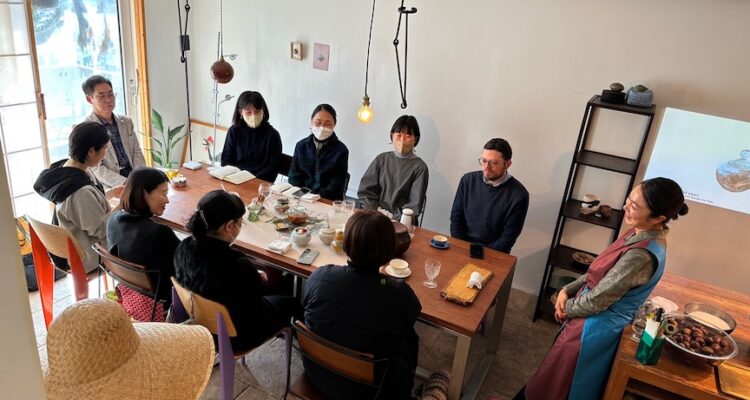Last month I was invited to join a workshop about Gam by my friend and food researcher Ha Mi hyun of Spoken recipe company (her interview here) in her studio in Yeounhi-dong (Seoul).
The workshop would have the gam – 감 (persimmon) as the protagonist: the varieties, the history of this fruit and role in Korean food as well as stories from the farmers from Jeolla-do where these fruits are cultivated.
Ha Mi Hyun and her staff prepared some recipes with gam and all together would be making yakbap and other dishes like delicious teas, sweets and so on.
Participating in this workshop It made me reflect about what I knew about the use and culture of persimmon in Italy and realised I knew more about the use of this fruit in Korean cuisine than in the cuisine in my own country.
If there is a fruit that represents fall in Korea is without any doubt gam 감 – persimmon. If it’s consumption as food and ingredients is probably what is mostly know of, is also true that traditionally the unripe fruit was used for dying clothes, while the wood of the tree for carving.
For this workshop with Spoken recipe we worked with gotgam 곶감 (dried persimmon) as well as fresh and pickled persimmons from the Suncheon province, known for their delicious and intense flavour. Drying for weeks outdoor, the dried fruit become a very special treat. A tasty treat but also a very versatile ingredient.
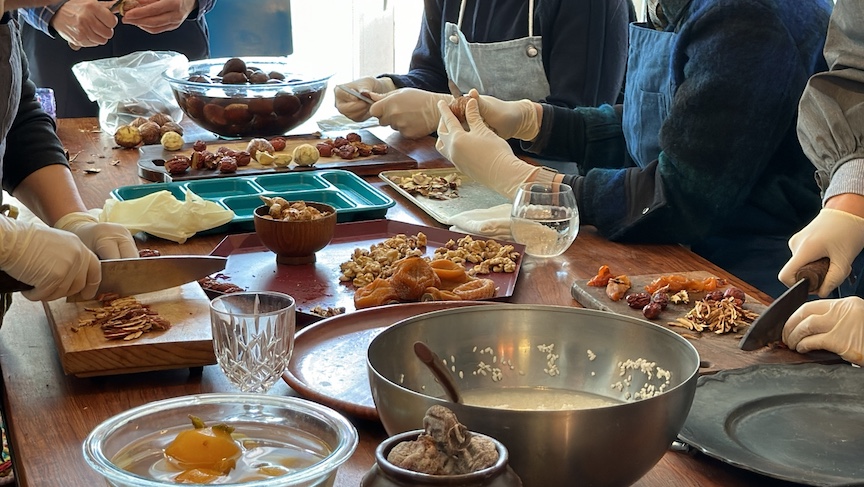
Following Ha Mi Hyun’ storytelling, we got to know small farmers that grow and harvest those delicious fruits, as well as learning more about traditional and not so traditional preparations that use gam as key ingredient. During the workshop we prepared yakbap 약밥 – cake made by steaming sweet rice with nuts, chestnuts and dried persimmon, a punch (sujonongwa) made with dried persimmon and cinnamon, steamed gotgam covered with rice flour and pickled gam with spicy dressing.
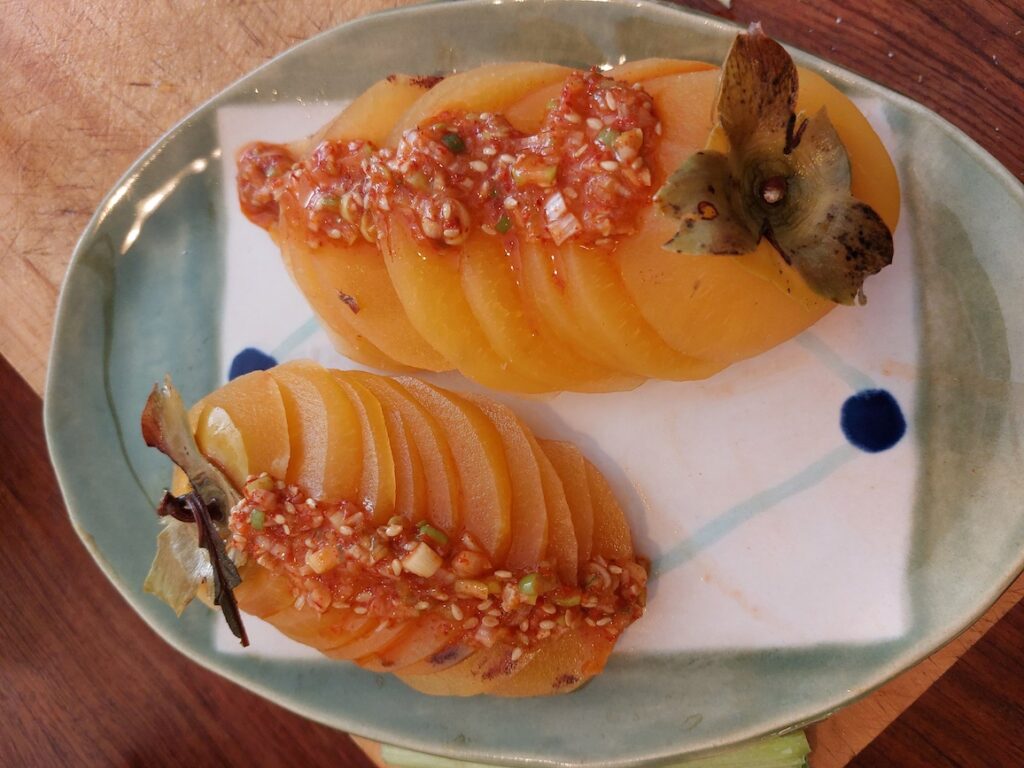
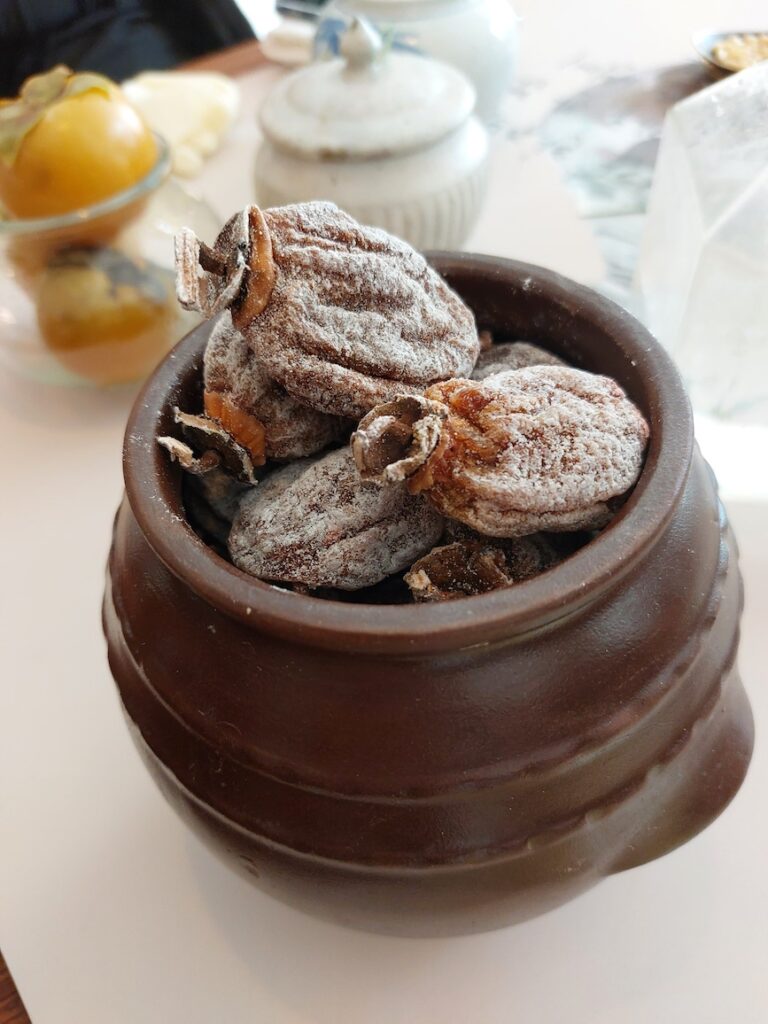
My contribution? A unripe sliced persimmon salad with rucola, walnuts and gorgonzola cheese with balsamic vinegar dressing. The result was appreciated and the fresh and sweet flavour of persimmon paired very well with the bold taste of gorgonzola cheese and the bitterness of the rucola.
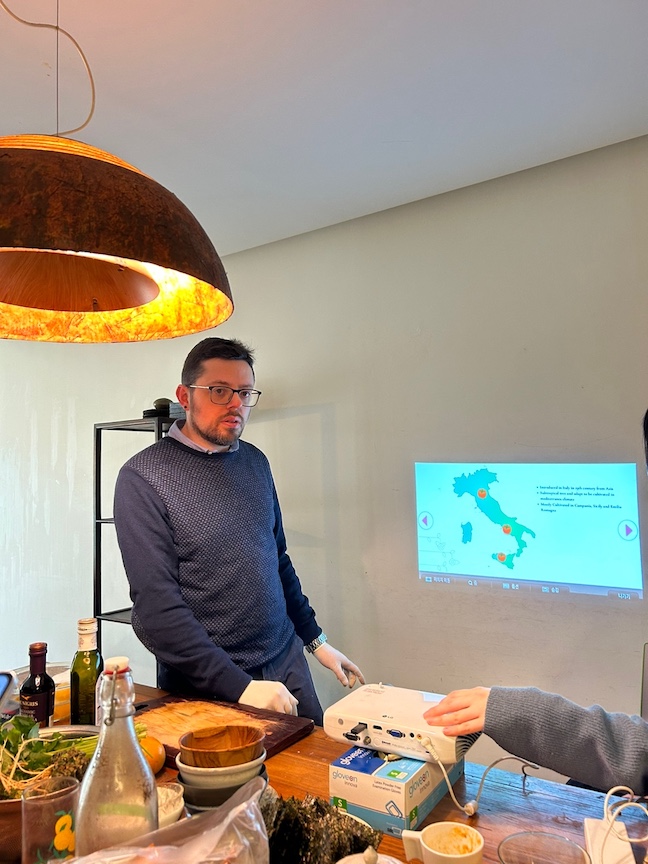
During my research on the history of persimmon in Italy, I also found out some interesting and amusing belief in rural agricultural areas about predicting the coldness of the winter by looking at the seeds of persimmon. A bit of storytelling that was very appreciated by the Korean participants to the workshop.
This type of discussion between food researchers from different countries and backgrounds, centred on an ingredients that is available in both cuisines, will develop on further cooperation and research about Korean and Italian cuisines. Something that we (Ha Mi Hyun and I) are planning to work on in the coming months.
.

